Have you ever looked at the night sky and wondered, “Can you see galaxies with a telescope?” Well, the answer is a resounding yes. As an amateur astronomy enthusiast and advisor, I assure you that you can explore the captivating world of galaxies from your backyard with the right telescope and observing conditions.
You can see galaxies with a telescope, even if you’re an amateur astronomer. You can observe numerous galaxies and their fascinating features with an average telescope and a dark sky. As you gain experience and upgrade your telescope, your intergalactic journey will become more thrilling and rewarding. The key to this adventure is knowing how to find these galaxies and being patient during observations.
In this article, you get
Information on what type of telescope is best for viewing galaxies
A list of galaxies to pick your favorite distant galaxy as your next observation target
Tips on making your galaxy and deep sky object observation even better
By the end of this article, you’ll have all the info you need to view galaxies with your telescope and much more!
Let’s dive right in.
Types of Telescopes
The two main types of telescopes are refractors and reflectors.

Refractors
Refractor telescopes use a lens to gather and focus light. These telescopes are great for beginners because they are:
- Low maintenance
- Easy to use
- Provide clear images
For example, a refractor telescope can easily see planets, the Moon, and distant galaxies.
Reflectors
Reflector telescopes use mirrors instead of lenses to collect and focus light. Some benefits of reflectors are:
- They have a lower cost per inch of aperture
- Can see deep-sky objects such as galaxies and nebulae
However, they require more maintenance than refractors. A reflector telescope might be a good choice if you want to explore the universe without breaking the bank.
Dobsonians
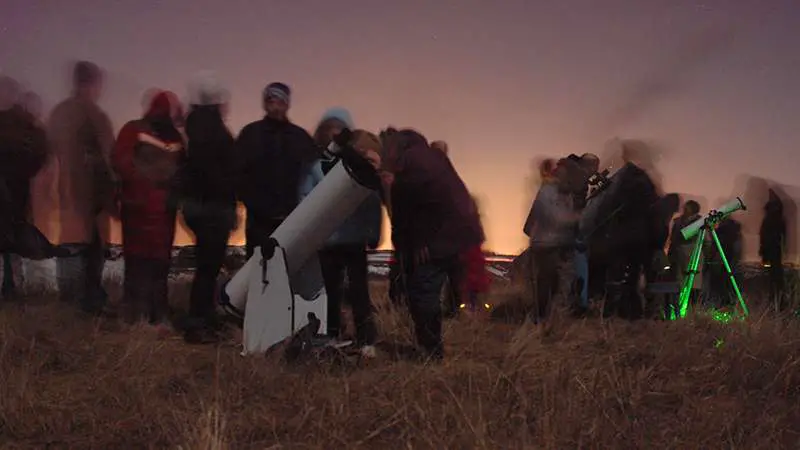
Dobsonian telescopes are reflector telescopes that come with a simple, sturdy mount. These telescopes are famous for their:
- Large aperture sizes
- Affordable prices
- Easy setup
With a Dobsonian, you can view distant galaxies, like the Andromeda Galaxy, even if you’re new to stargazing.
Smart Telescopes
Smart telescopes are equipped with computerized systems to help you:
- Find celestial objects easily
- Track moving objects
- Enhance faint objects
These telescopes can be controlled with your smartphone, making sharing your discoveries with your friends easy.
Now that you know about the different types of telescopes, get ready to dive deeper into their specifications and structures in the next section.
Galaxy Observing Basics
Aperture and Magnification
When observing galaxies, the size of your telescope’s aperture is critical.
An aperture is the diameter of the telescope’s primary lens or mirror, which collects light.
A larger aperture lets in more light, making it easier to see faint, faraway galaxies. Generally, a telescope with a 6-inch or larger aperture will be better for observing galaxies.
Magnification is essential too, but remember that higher magnification makes the image darker, so the balance between aperture and magnification is crucial.
Here are some examples of aperture sizes and their capabilities:
- 4-inch (100mm) aperture: Hints of galaxy structure
- 6-inch (150mm) aperture: More details in brighter galaxies
- 8-inch (200mm) aperture: Good views of many galaxies, including some faint ones
Focal Length and Focal Ratio

Focal length refers to the distance between the telescope’s primary lens or mirror and the image it forms.
The focal ratio, the focal length divided by the aperture size, indicates the telescope’s ability to gather light. A lower focal ratio means a brighter image and wider field of view, which helps observe galaxies.
A telescope with a longer focal length shows a smaller, more zoomed-in view of the sky.
For example, a telescope with a 1000mm focal length and a 200mm aperture would have a focal ratio of f/5, making it suitable for observing galaxies.
Eyepieces and Barlow Lenses
Eyepieces are essential for magnifying your telescope’s image, and having different eyepieces allows you to adjust the magnification for various objects.
You can use Barlow lenses to increase the magnification, effectively doubling or tripling the power of an eyepiece.
For galaxies, you’ll typically use low to medium-power eyepieces (10mm to 25mm).
However, using a Barlow lens can also decrease the image’s brightness, so use them wisely when observing galaxies.
Using Filters for Better Contrast
Filters can significantly enhance the contrast between galaxies and the background sky, making it easier to observe them.
There are different types of filters to choose from, including:
- Light Pollution Reduction (LPR) filters: Helpful when observing from light-polluted areas
- Narrowband filters: Allow specific wavelengths of light to pass through, enhancing the contrast of particular objects
To make the most of your galaxy-observing experience, remember these tips:
- Use a telescope with an aperture of at least 6 inches
- Keep the balance between aperture size, focal length, and magnification
- Choose the suitable eyepieces and filters for optimal contrast
Now that you’ve learned about galaxy observing basics, you’re ready to move on to the next section, where you’ll discover how to locate the best galaxies to observe and enhance your stargazing experiences.
Can you see galaxies with a telescope? Notable Galaxies to Observe
Andromeda Galaxy

The Andromeda Galaxy (M31) is a nearby galaxy. It’s the nearest large galaxy to our Milky Way. On a clear night, you can see it with the naked eye. To spot it, look for a fuzzy patch in the constellation Andromeda.
Milky Way Galaxy
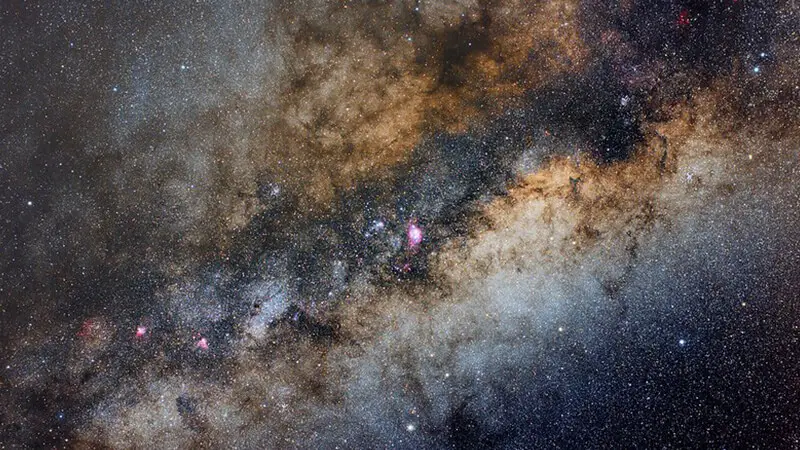
Our home galaxy, the Milky Way, stretches across the night sky like a shining band. To best observe it, find a location far from city lights to minimize light pollution, and look up on a moonless night.
M51, M81, and M33
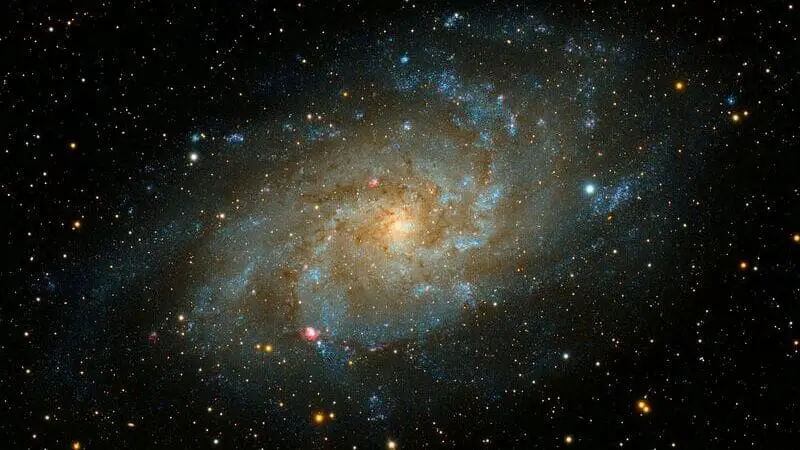
These spiral galaxies offer excellent views through a telescope:
- M51, known as the Whirlpool Galaxy, is in the Canes Venatici constellation.
- M81, or Bode’s Galaxy, resides in Ursa Major.
- M33, the Triangulum Galaxy, is found in the constellation Triangulum.
M82, the Cigar Galaxy
M82 is called the Cigar Galaxy. It’s an irregular galaxy in Ursa Major. Its cigar-like shape makes it easy to spot.
Small Magellanic Cloud
This nearby dwarf galaxy can be best observed from the Southern Hemisphere. Its irregular shape makes it an exciting target for amateur astronomers.
M104, the Sombrero Galaxy
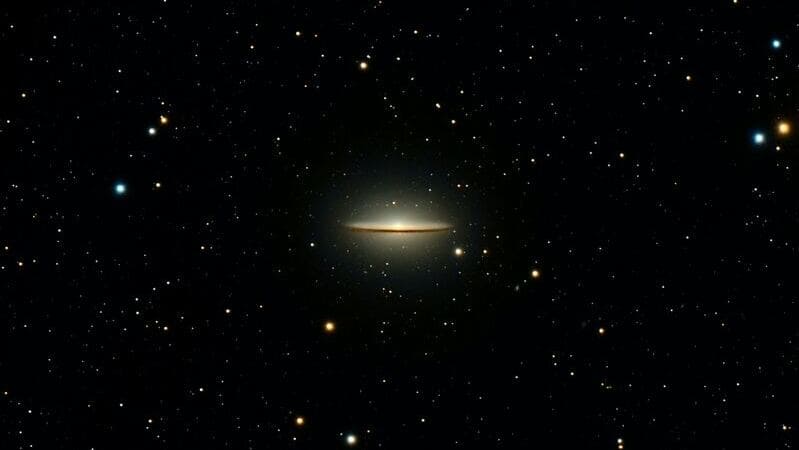
The Sombrero Galaxy (M104) is a spiral galaxy in the constellation Virgo. Its distinct “sombrero” shape is due to a large central bulge and a prominent dust lane.
M101, the Pinwheel Galaxy

The Pinwheel Galaxy (M101) is a face-on spiral galaxy with many bright, colorful star-forming regions in the constellation Ursa Major.
Now that you know about these notable galaxies, let’s dive into how to choose the right location and tools for observing them in the next section.
The Impact of Light Pollution
Did you know that light pollution can make seeing galaxies through your telescope difficult? Even with a powerful telescope, unwanted light from streetlights, buildings, and cars can spoil your view of the night sky.
Knowing how light pollution affects your ability to see galaxies and other celestial wonders is essential.
When observing galaxies, finding a location with dark skies is crucial. That’s because light pollution:
- Drowns out the light from faint objects like galaxies
- Increases the brightness of the sky background
- Makes it hard to see subtle colors and details
Don’t worry, though. There are ways you can still enjoy stargazing in less-than-ideal conditions. Here are some tips:
- Use a light pollution filter to enhance clarity and detail
- Try a dew shield to stop light from getting into your telescope
- Find the darkest spot available, even if it’s just your backyard
Doing so will improve your chances of seeing more in the night sky, including galaxies. Remember, even if you can’t see everything you’d like due to light pollution, gazing at our universe is still a wonderful experience.
As we continue to explore the world of amateur astronomy, our next section will focus on more celestial objects to observe.
Exploring More Celestial Objects
Star Clusters

Star clusters are groups of stars bound together by gravity. Try to spot these fascinating celestial objects through your telescope. Two main types of star clusters are open clusters and globular clusters.
Examples include the Pleiades and the Hercules Cluster. Look for them in clear, dark skies away from city lights.
Planets
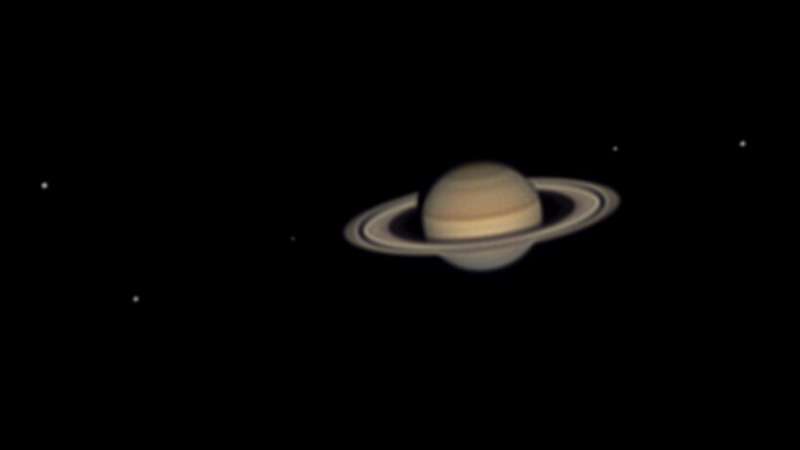
Our solar system’s planets are another fantastic sight in your telescope. You can observe them quite clearly, even with small scopes.
For instance, Jupiter’s cloud bands and Saturn’s rings provide detailed views that will leave you in awe.
Comets
Comets are chunks of ice and dust that orbit the Sun. If you’re lucky enough, you might glimpse one through your telescope.
With their glowing comas and bright tails, comets are a must-see for any amateur astronomer.
Constellations
Constellations are patterns of stars in the sky that people have connected into shapes or pictures. These groups of stars can help guide you to other celestial objects you’d like to observe.
Some famous constellations to look for include Orion, the Big Dipper, and Constellation Canes Venatici.
Messier Catalogue
The Messier Catalogue is a list of 110 celestial objects compiled by French astronomer Charles Messier. It includes various:
- Galaxies (e.g., M66, M95)
- Nebulae
- Star clusters
To help you get started, here’s a short checklist of some Messier objects to find:
- M66 – a spiral galaxy in the constellation Leo
- M95 – a barred spiral galaxy, also in the constellation Leo
- M45 – the Pleiades star cluster in the constellation Taurus
Now that you have a roadmap of celestial objects to explore, it’s time to grab your telescope and start observing.
In the next section, we’ll discuss a few techniques to make your stargazing sessions more enjoyable.
Galactic Features and Characteristics
Size and Shape
Galaxies come in various sizes and shapes. Some are big, like the Whirlpool Galaxy in the constellation Canes Venatici, while others are small, like dwarf galaxies. Here are a few examples of different galaxy sizes:
- Whirlpool Galaxy: Large and oval-shaped
- Dwarf Galaxies: Small and irregularly shaped
Spiral Structures
A popular type of galaxy is the spiral galaxy. As the name suggests, they have a beautiful spiral shape. The arms of these galaxies contain younger stars, while the older stars are near the center. That’s why the cores of spiral galaxies tend to be brighter than their arms.
If you use a 4-inch telescope, you might see the bright core of a galaxy. As your telescope size increases, you’ll see more details in the spiral arms.
Dwarf Galaxies
Dwarf galaxies are the smaller cousins of more giant galaxies. They are usually irregular in shape, which makes them interesting to observe.
Despite their small size, dwarf galaxies can significantly impact the universe due to their interactions with other galaxies.
So, watch for these little cosmic wonders while exploring the night sky with your telescope.
Elliptical Galaxies
Elliptical galaxies are another common type of galaxy discovered by Edwin Hubble.
These galaxies are oval-shaped with little to no spiral structure. You’ll need a larger telescope, like a 6-inch one, to spot an elliptical galaxy. Then, the galaxy’s core will appear as a slightly brighter area.
Now that you know about different galactic features and characteristics, you’re on your way to becoming an amateur astronomy expert!
In the next section, you’ll learn helpful tips to make your stargazing adventures even more exciting.
Tips for Better Galaxy Observation
Observing galaxies can be a thrilling experience, especially if you know how to enhance your viewing. Here are some tips to help you get the most out of your galaxy observation:
- Choose the right location: Find a spot with little to no light pollution for a clearer view. Dark skies make it easier to see faint galaxies.
- Allow your eyes to adapt: Give your eyes 10-15 minutes to adjust to the darkness before starting your observation.
Now let’s dive into some specific techniques and tools that can improve your experience:
- Images and details: Use star charts or astrophotography apps to help identify galaxies in the sky. These resources show you the position and appearance of galaxies so you can quickly locate them.
- Contrast and filters: Enhance the contrast between galaxies and the background sky. Narrowband filters help block out light pollution and allow you to see faint details more easily. Be aware that filters work best in larger telescopes.
- Northern Hemisphere observing: Some galaxies are best visible from the northern hemisphere. For example, the famous Andromeda Galaxy and the Whirlpool Galaxy are both easily seen from this hemisphere.
Here’s a simple checklist to follow during your galaxy observation:
- Locate a dark observing site
- Allow your eyes to adapt to the darkness
- Use images and apps to identify galaxies
- Apply filters for better contrast (optional)
- Observe different galaxies based on your location
I hope these tips help you enjoy your galaxy observations even more! Let’s now move on to something closer to home!
Viewing the Moon and Solar System
As an amateur astronomer, I know it is essential to use telescopes to explore the wonders of our solar system. With the right telescope, you can examine the Moon’s craters and mountains and observe the colors of planets. But can you see the flag on the Moon?
Craters and Mountains on the Moon
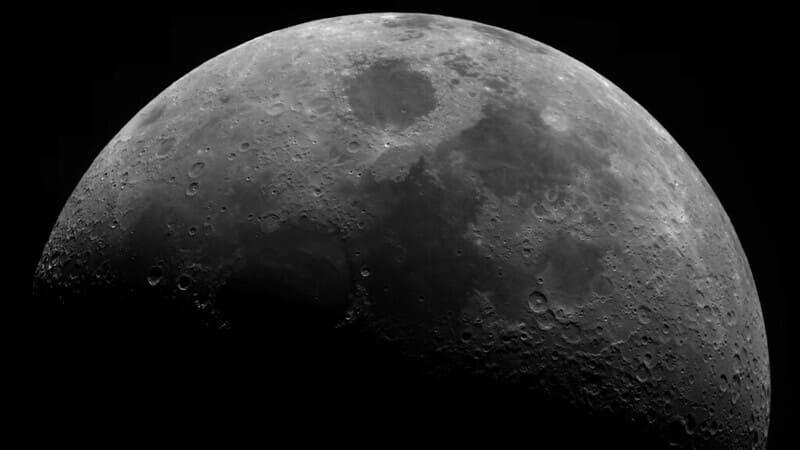
While observing the Moon, you’ll notice fascinating features on its surface:
- Craters: These are circular holes caused by impacts from space rocks.
- Mountains: The Moon also has towering peaks that can be seen with a telescope.
To get the most out of your moon observation experience:
- Observe during a crescent or half-moon phase as shadows highlight the features.
- Use a telescope with a long focal length for a more detailed view.
Colors of Planets

Our solar system’s planets offer spectacular views with unique colors and features. Here are a few planets you can observe:
- Jupiter: You might see its orange and white stripes and the Great Red Spot.
- Saturn: Enjoy the sight of its magnificent, icy rings.
- Mars: The Red Planet’s rust-colored surface can be seen with a telescope.
To see planets in their true colors, make sure to:
- Use a telescope with a larger aperture for brighter images.
- Observe during favorable positions and times.
Famous Observations and Discoveries
Many famous observations and discoveries of galaxies have been made by amateur and professional astronomers like you. Let me share some of them with you.
One of the most well-known galaxies is the Andromeda Galaxy, M31. It’s our closest spiral galaxy neighbor, and it’s so big that you can even spot it with the naked eye on a clear night. You can find it near the constellation Andromeda, close to a bright star called Mirach. When using a telescope, you may also see nearby galaxies M32 and M110.
The Andromeda Galaxy is not the only one you can observe. Plenty of other fascinating galaxies are out there, including those discovered by the famous Hubble Space Telescope and, more recently, the James Webb Space Telescope.
Here are a few remarkable discoveries:
- The Whirlpool Galaxy (M51)
- The Sombrero Galaxy (M104)
- The Antennae Galaxies (NGC 4038 and NGC 4039)
You might also come across exciting formations called globular clusters when observing galaxies. These are groups of stars that orbit around the center of a galaxy. They can add a unique touch to your stargazing experience.
I hope you’re excited to start your journey into the world of galaxies!
Summary: See Galaxies with a Telescope
Thank you for reading my article “Can You See Galaxies with a Telescope?”
Seeing galaxies with a telescope is possible with the right equipment and techniques! Even an average telescope can let you view distant galaxies as long as the skies are dark enough to see the faint light from these far-off cosmic sightings.
It’s essential to choose the right telescope. Remember, as you gain more experience, you’ll be able to observe more types of galaxies with a better-quality telescope.
To make observing galaxies easier, follow these tips:
- Start from the brightest galaxies
- Study their shape and objects around them
- Be patient and let your eyes adapt to the darkness
The Andromeda Galaxy is the nearest galaxy to us, and it’s a great place to start your galaxy-gazing journey. Other galaxies you can see in the night sky with a telescope include those in the Coma Berenices and Virgo constellations.
Here’s how you can make the most of your telescope when looking for galaxies:
- Position your telescope away from light pollution to improve your view.
- Use low magnification to cover a wider area of the night sky.
- Be persistent! Observing galaxies can be challenging, but with practice, you’ll get better and better.
Remember, the sky is full of wonders, and with the right tools and knowledge, you can have an incredible time exploring the extraordinary world of galaxies.
You’re already on your way to becoming an amateur astronomer, so keep practicing, stay curious, and, most importantly, have fun out there!




